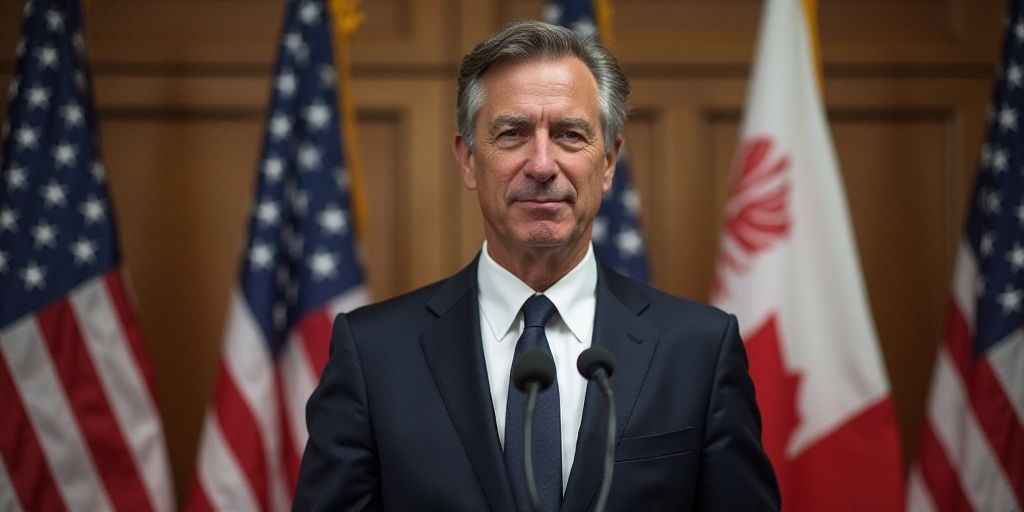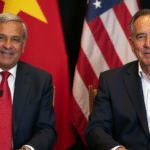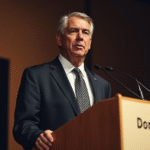Background on Jerome Powell and the Federal Reserve
Jerome Powell, the current Chair of the Federal Reserve (Fed) in the United States, has been at the helm since February 2018. Appointed by President Donald Trump, Powell succeeded Janet Yellen and has since navigated the central bank through a period of economic stability and occasional uncertainty. The Fed, an independent government agency, is responsible for managing the nation’s money supply and setting short-term interest rates to maintain economic growth, stable prices, and maximum employment.
The Dual Challenge: Inflation vs. Weak Labor Market
On Tuesday, Powell addressed the delicate balancing act faced by the Fed. He emphasized that the central bank must carefully weigh the risks of high inflation against a weak labor market in upcoming interest rate decisions. This dual challenge stems from differing viewpoints among Fed members, with some advocating for aggressive rate cuts and others urging caution.
Powell’s Warning Against Overly Aggressive Rate Cuts
During an event in Rhode Island, Powell cautioned that rapidly lowering interest rates could allow inflation to remain elevated. He explained, “There is no risk-free path.” If the Fed loosens monetary policy too aggressively, there’s a risk of failing to reach the 2% inflation target and needing to reverse course later, he said.
The Risk of a Restrictive Policy
On the other hand, Powell noted that maintaining a restrictive monetary policy for too long could weaken the labor market unnecessarily. The recent 25-basis-point reduction in the federal funds rate target range (4% to 4.25%) was a preventative measure intended to support the economy and avoid further labor market deterioration, despite inflation remaining above the Fed’s 2% target (2.6% in July and expected to reach 2.7% in August).
Divergent Opinions Among Fed Members
Only one Fed official, Stephen Miran (appointed by Trump), voted against the recent rate cut and advocated for a larger 50-basis-point reduction. Powell acknowledged that the recent surge in inflation, driven by increased goods prices and tariffs, is largely due to higher import costs. Although the impact of tariffs on consumers has been slower and less severe than anticipated, many forecasts predict this trend will persist through the next year.
The Fed’s Current Stance and Future Policy
Powell emphasized that the Fed’s current policy position is well-suited to address potential economic developments. He acknowledged high uncertainty surrounding inflation trajectories and increasing risks to employment, given the significant slowdown in job creation. The full economic effects of recent trade, immigration, fiscal, and regulatory policy changes remain to be seen.
Supporting the Labor Market
Vice President for Supervision at the Fed, Michelle Bowman, has stated that the Fed should minimize inflation concerns and commit to rate cuts to support a labor market on the brink of collapse. “It’s much easier to support the labor market by lowering federal funds rates than trying to fix it after it has crumbled,” Bowman said. Although the unemployment rate is near full employment estimates (4.3%), Bowman highlighted that hiring has slowed significantly, making it “time for the Committee to act decisively and proactively to address the waning labor market dynamism and emerging signs of fragility” with continued rate reductions.
Caution Among Regional Fed Presidents
Regional Fed presidents who spoke this week urged caution against further rate cuts, given that inflation remains nearly a percentage point above the Fed’s target and the impact of government tariffs and policies is still being evaluated. Austan Goolsbee, president of the Fed of Chicago, advised against being overly aggressive initially, as inflation has exceeded the target for 4.5 years and continues to rise.
Future Fed Meetings and Rate Expectations
The Fed will convene again on October 28-29, and investors anticipate another rate cut, consistent with projections made after the previous meeting that forecasted reductions of a quarter-point in October and December. However, opinions remain divided, with Powell maintaining a neutral stance while awaiting new employment and inflation data.
Key Questions and Answers
- What is the dual challenge facing the Fed? The Fed must balance the risks of high inflation against a weak labor market in upcoming interest rate decisions.
- What happened during the recent Fed meeting? The Fed reduced its target range for the federal funds rate by 25 basis points to support the economy and avoid further labor market deterioration, despite inflation remaining above the 2% target.
- What are the differing opinions among Fed members? Some members, like Stephen Miran, advocate for larger rate cuts, while others, including Austan Goolsbee, urge caution due to elevated inflation levels.
- What is Powell’s current stance on rate cuts? Powell maintains a neutral position, carefully weighing the risks of both overly aggressive and overly cautious rate adjustments.






